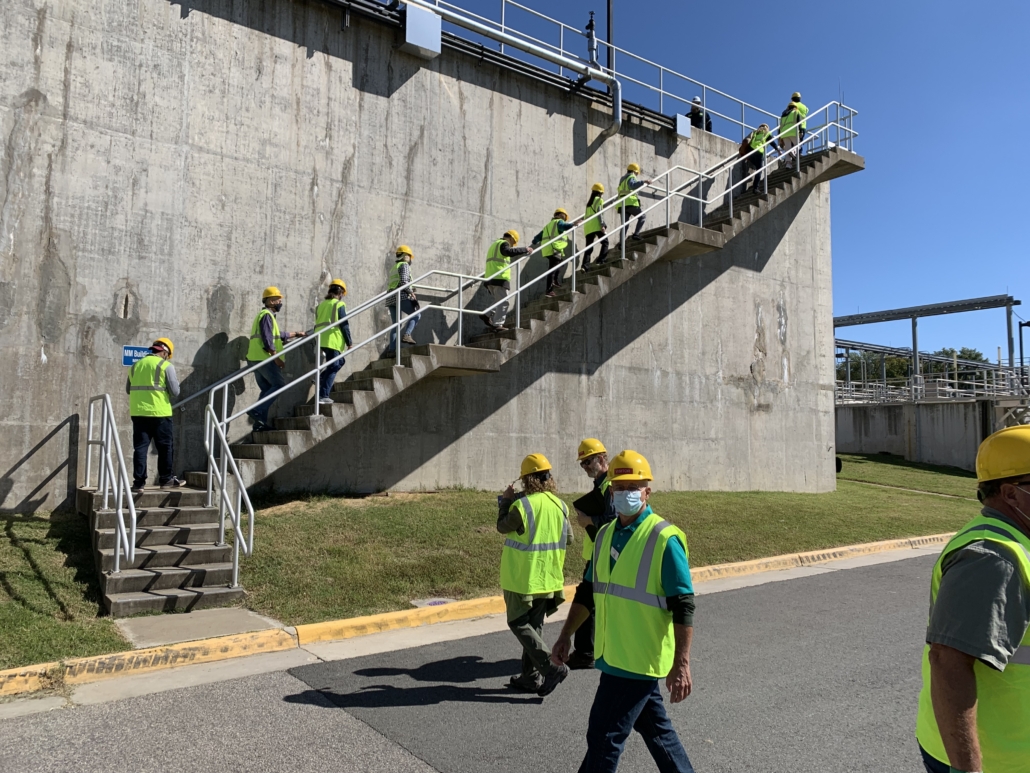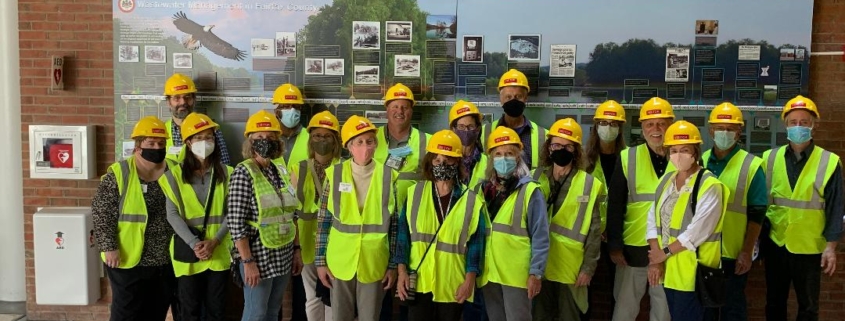Fairfax Master Naturalists Tour State of the Art Sewer Plant
Photo: Melissa Atwood
Article by FMN Mike Walker
A group of Fairfax Master Naturalists had a unique opportunity to visit the Noman M. Cole, Jr., Pollution Control Plant, located on Route 1 in southern Fairfax County recently. The visit, organized by chapter president Marilyn Parks, was actually a continuing education “field trip” incident to the state-wide “on-line” annual meeting of Virginia Master Naturalists Chapters.
The Cole facility, located on 400 acres, serves about 40 percent of Fairfax County and is among a handful of water or sewage treatment plants in the United States operating at “state of the art” efficiency. With advanced wastewater treatment systems, the facility is able to remove or “digest” water pollutants, nutrients and contaminants at an exceptionally high level, earning recognition as being in the top tier of the 16,000 publicly owned treatment facilities in the United States, an important achievement for Fairfax County and our local rivers and the Chesapeake Bay. About 75% of sanitary wastewater is treated by similar facilities. The remaining 25 % of waste winds up in private septic tanks.

The facility, which celebrated its 50 year anniversary in 2020, uses a four-stage process to treat south Fairfax County’s wastewater: primary, secondary, advanced treatment and final treatment. After the secondary phase, the effluent moves to three five-million gallon holding ponds. Wildlife thrives in these ponds and 89% of treatment facilities in our country stop their treatment here. The Cole facility, however, goes two stages beyond, which includes using Moving Bed Biologic Reactors (MBBR). This microbiologic process uses tiny, pasta-shaped plastic pieces on which to grow algae to feed “good “microbes that convert nitrates to nitrogen gas. (Nitrogen is the primary gas in our atmosphere.) By the time the effluent is released to Pohick Creek, it is cleaner than the water in the creek.
We were privileged that Cole’s superintendent Mike McGrath took time to personally escort our group on much of the tour, with operations manager Joshua and Melissa showing us the entire physical set up from the bar screen to the water sampling laboratory.
Sewage and sewage treatment is often a subject many choose not to think about: what is out of sight is out of mind. But the men and women of Fairfax County who work daily to run this amazing operation, from the 3,000 miles of collection sewers to the solid waste that is removed from the bar screen – including false plastic fingernails – this is a highly sophisticated, automated operation, that is a real success story that Fairfax residents can be proud of.


